The best robot vacuums for pet hair of 2020
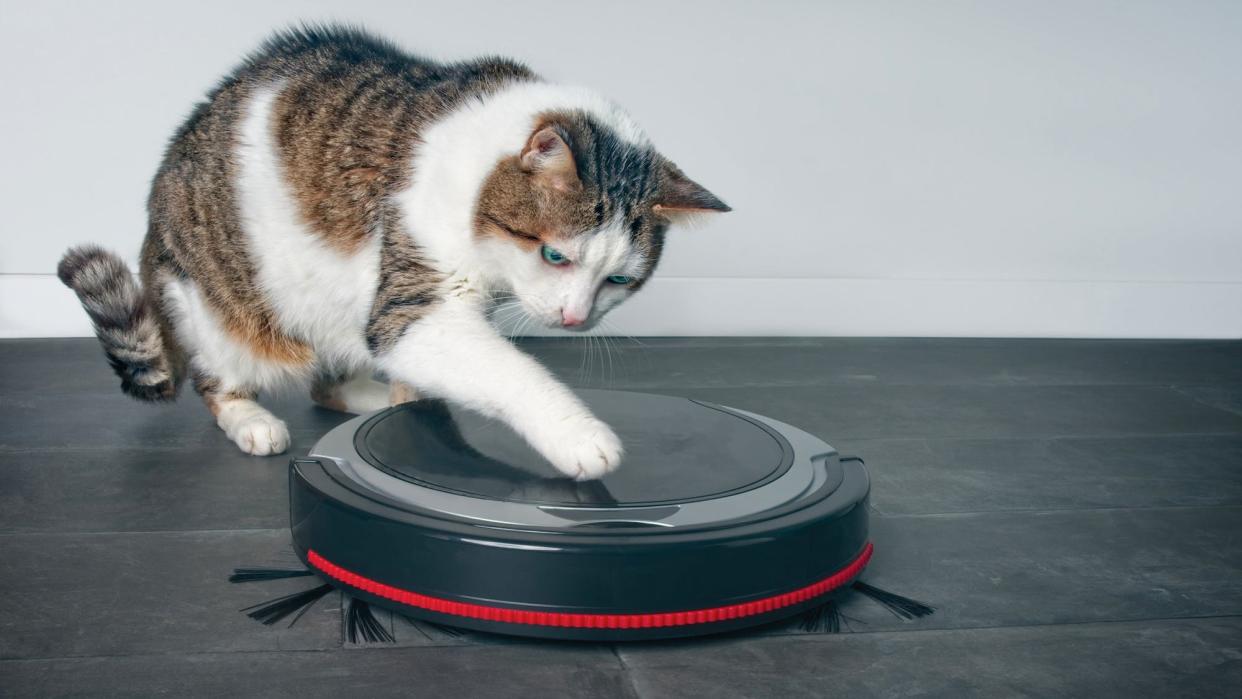
— Recommendations are independently chosen by Reviewed’s editors. Purchases you make through our links may earn us a commission.
Pets are great. Pet hair? Not so great.
One of the worst parts of pet ownership is keeping up with the sheer amount of fur your dogs or cats shed on a daily basis. Depending on how much your pet sheds, you could sweep and vacuum in the morning and, by evening, have enough new fur strewn about to make an entirely new pet.
If this situation resonates, maybe it's time to get a robot vacuum designed to remove pet hair, along with other dirt, from your home's floors. These automated cleaners can be set to run on a schedule, so the only thing you have to do is occasionally empty its dust bin.
A good rule of thumb is, the bigger the battery (and the longer the battery life is), the better the cleaning job.
Get expert shopping advice delivered to your phone. Sign up for text message alerts from the deal-hunting nerds at Reviewed.
Since the number of robot vacuums on the market has exploded over the past few years, the trick has become narrowing down which one is the best for you. Nowadays, there are robots that respond to voice commands and even one that doubles as a wet mop.
But to narrow down which are the best at cajoling cat hair from carpet or cleaning summer shedding from your hardwood floors, you really need to test them out first, and we've been testing dozens of robot vacuums since 2014.
We’ve learned that dealing with fur on your floor is about three things: navigation, agitation, and powerful suction. The best robot vacuums can find their way around a room, root pet hair out of carpet fibers, and vacuum it up.
After hours of testing, the Neato Botvac D7 Connected (available at Amazon for $479.99) is our favorite for all pet owners, while the iRobot Roomba i7+ (available at Amazon for $599.99) is perfect for cat owners specifically.
These are the best robot vacuums for pet hair ranked, in order:
1. Neato Botvac D7 Connected
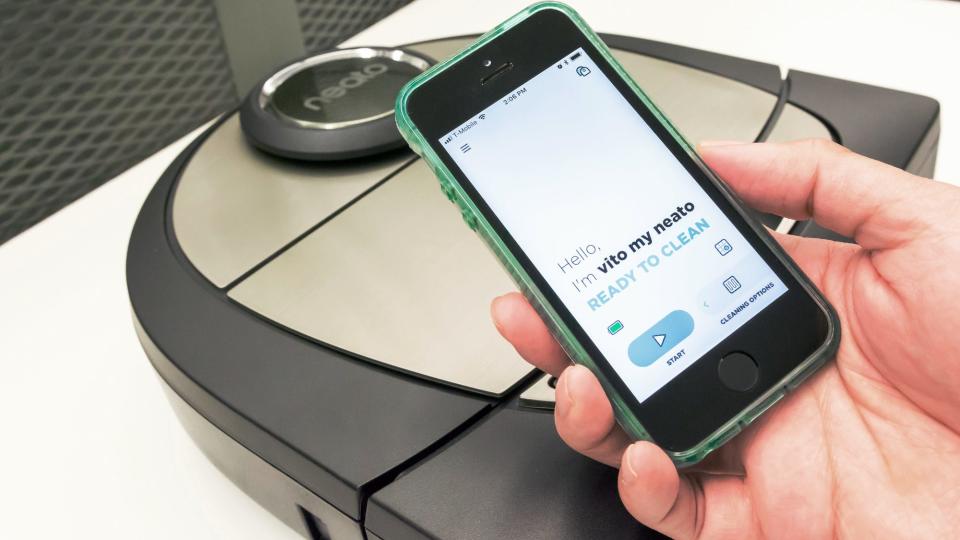
The Neato Botvac D7 Connected stands as a milestone in robot vacuums. It was the first robot vacuum you can tell when, how, and where to clean—all from your smartphone.
With its innovative no-go lines feature, you can draw lines on virtual maps that the D7 creates to prevent the unit from going near sensitive areas like pet bowls and beds.
While the no-go feature is cool, Neato also makes a robot vacuum that cleans well, where you want it. The D7’s large wheels, side brushes, and D-shaped design allow it to climb high-pile carpet and get flush against walls.
On average, the Neato picked up 9.6 grams of dirt per run. To put that in perspective, if you set the D7 to run automatically every day, that equals 67 grams of dirt a week—on par with light cleaning from a full-sized vacuum. Additionally, as it's equipped with a HEPA filter, owning a D7 will go a long way towards keeping your home allergen-free.
Get the Neato Botvac D7 Connected on Amazon for $479.99
2. iRobot Roomba i7+
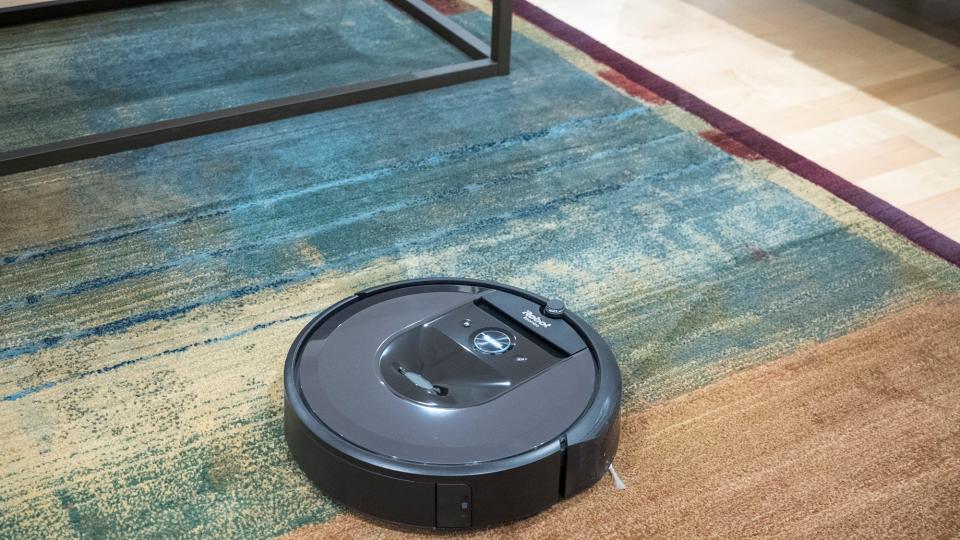
The iRobot Roomba i7+ is the best overall robot vacuum we've tested to date, but it scored just below the Neato Botvac D7 Connected when it comes to pet hair.
It is the first robot vacuum that can empty itself. A vacuum in the charging base suctions everything out of the bin into a sealable bag. This means you don't have to see, touch, or smell what your robot vacuum picks up. As much as you love your cats, their hair can get gross, so keeping it sealed up is a huge boon.
The i7+ also comes with a host of features perfect for any smart home enthusiast. This Roomba has access to everything the iRobot Genius app has to offer, including the ability to avoid or clean specific rooms or areas. This is the main reason why we think the i7+ is ideal for cat owners. For example, you can direct the i7+ to just clean around the litter box or under the couch.
More importantly, a cat can ride a Roomba, but a Neato would stop moving if an animal climbed atop it.
Fancy tech aside, the i7+ picks up quite a bit. On average, it picked up 10 grams of debris, so in a week, it can keep up with a mild manual cleaning. The i7+ is expensive, but every penny is accounted for in the large number of features and excellent performance. Not to mention you can often get it on sale.
Get the iRobot Roomba i7+ on Amazon for $599
3. Eufy Robovac 11s
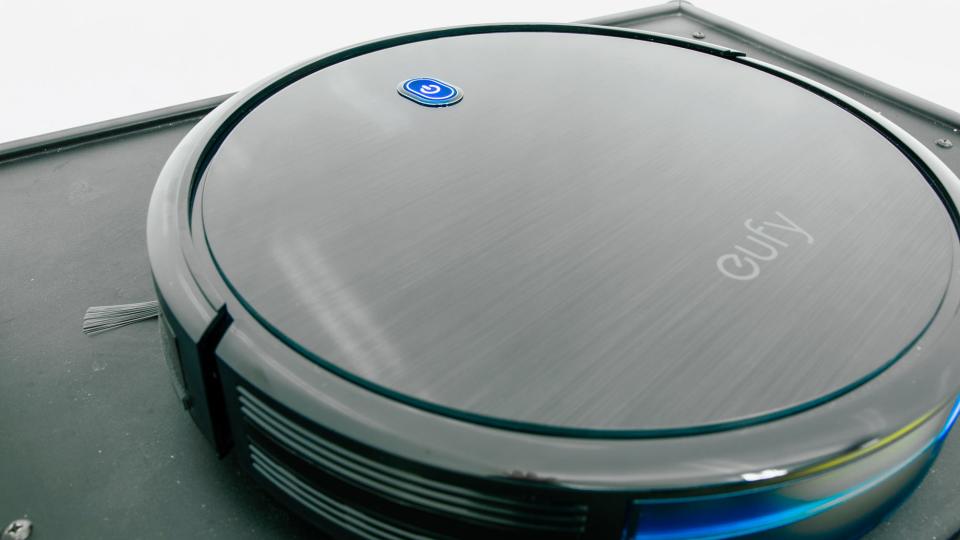
If dog hair is the furriest thing on your floors, the Eufy RoboVac 11s is worth checking out. It's a highly affordable model that also rocks good performance.
The Eufy is perfect for anyone who wants to figure out if a robot vacuum and their pets are compatible. A slim design allows the 11s to jam its brushes into places where pet hair often gets swept away. This model also boasts quiet operation, so it isn’t likely to irritate your pets.
Need help finding products? Sign up for our weekly newsletter. It’s free and brings our deals directly to your inbox.
The RoboVac 11s has a few drawbacks. It has no virtual walls or magnetic strips to ward it off from unwanted areas. Also, during testing, the Eufy was entirely unable to clean high-pile carpet. This means it will do best in homes with bare floors not thick carpets.
Get the Eufy Robovac 11s on Amazon for $149.99
4. EcoVacs Deebot Ozmo 930
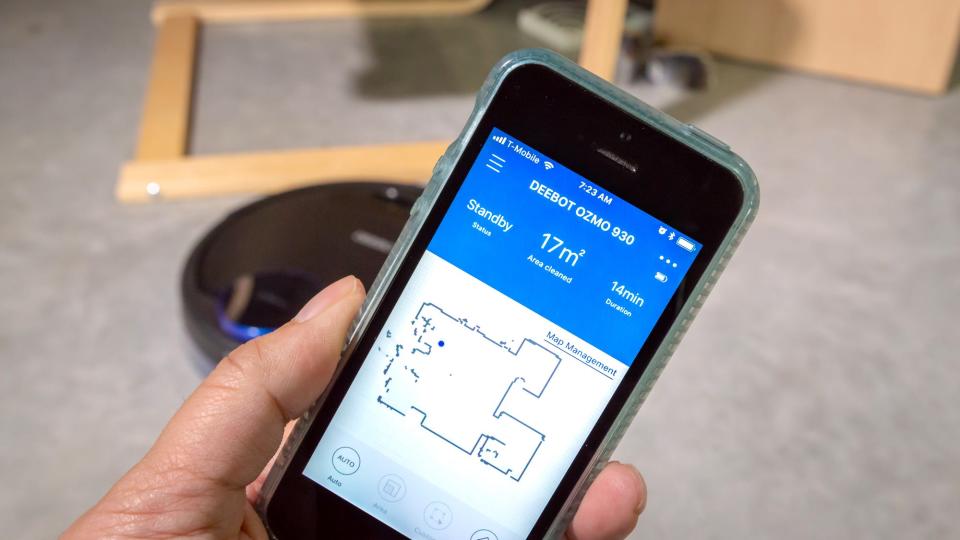
Testing shows that the Ecovacs DeeBot Ozmo 930 sits ahead of most of the competition. The majority of smart vacuums let you start, stop, and schedule from your phone. The 930 lets you do that with just the sound of your voice, since it’s Alexa- and Google Assistant-compatible.
You can also create virtual barriers—lines you don’t want the 930 to cross and ones you do. With a single swipe, the app tells the 930 to go over a certain area multiple times. This feature works really well with high-traffic locations in your home.
Areas like doggy doors and near food bowls always seem to need an extra going over before they get fully clean.
Get the EcoVacs Deebot Ozmo 930 on Amazon for $437.49
5. Eureka Groove
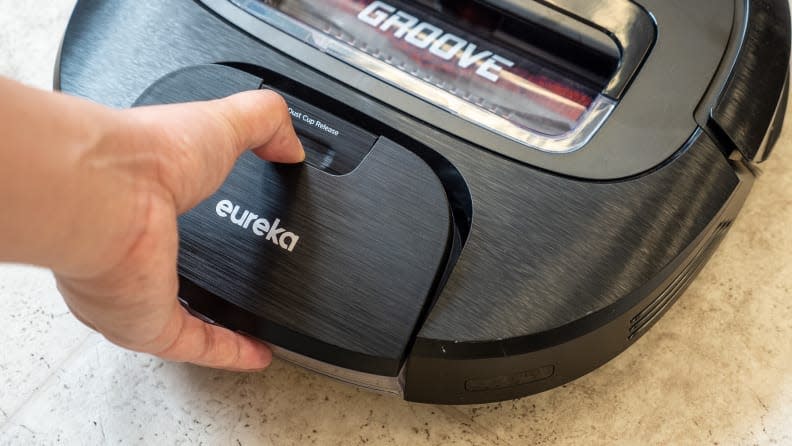
The Eureka Groove NER300 impressed us with its powerful suction and ability to climb high thresholds. During testing, the Groove suctioned up enough dirt and debris to stand toe-to-toe with robot vacuums that cost twice as much.
What makes the Groove great for pet owners is that it is super easy to remove the brush roll and clean it.
We did find that the Groove can be a bit rough on furniture. Not dangerously so, but since there’s no way to keep this robot vacuum from entering sensitive areas aside from shutting the door, it is a cause for concern.
Get the Eureka Groove on Amazon for $149.99
How we tested
Most of the tests involve our robot obstacle course. The area contains analogs for furniture legs, shelves, and thresholds. Each robot vacuum has three chances to prove itself. The first two runs, we placed cork pellets under the shelves and between the furniture legs.
When we let the robot vacuum loose, we look for how long a cleaning cycle takes, what obstacles it is able to clean thoroughly, and overall debris pickup. For the final test run, we replace the cork with pet hair.
We also spend time looking at how each robot vacuum can benefit a pet owner with their personal cleaning schedules.
What you need to know about robot vacuums
A robot vacuum’s ability to pick up dirt pales in comparison to that of a full-sized vacuum and can only really compete over the course of a week. We found that consumers experience the most satisfaction with their robot vacuums when they view them as a way to maintain their floors in between manual cleanings.
Most robot vacuums are designed for bare floors and medium carpet. If you own throw rugs taller than one-half inch, your robot vacuum may not be able to climb atop it, or it may get stuck if it gets up there. This fact is vital for pet owners because it means pet beds are a point of contention.
Avoiding robot vacuum pet mishaps
Over the years, three technologies have developed to help keep robot vacuums from running amok: magnetic strips, virtual barriers and app-based barriers. All three of these methods have their pros and cons.
Magnetic strips: These are the simplest. You lay them on the floor and they create a barrier that designated robot vacuums will not cross. While they don’t require batteries, magnetic strips are cumbersome. Most robot vacuums that include them only ship with one, so you have to cut them if you want to cover multiple entryways.
Virtual barriers: The next step up are virtual barriers. These battery-powered devices emit an infrared line that tells robot vacuums to turn back. Some specialized barriers, like iRobot’s lighthouse, can create a “halo” or a circle barrier to encompass a piece of furniture or a pet bowl, but most work by line of sight, meaning you'll need several to block multiple doorways.
App-based barriers: The final method, aside from shutting doors, involves specialized apps. New mapping technologies allow robot vacuums to actually map out and navigate your home like a person would. They can then send that information to your phone, letting you designate where the vacuum should and shouldn't go. Companies like iRobot, Neato, and Ecovacs all produce robot vacuums were you can draw lines on virtual maps to create these barriers.
Robot vs. vacuum
Whenever you have a device that’s battery powered, you’re going to have to deal with a series of tradeoffs. With robot vacuums, it’s a balancing act between being a good robot and being a good vacuum.
A good robot navigates well by not bumping into furniture and getting over thresholds. But a robot vacuum’s worst downfall is when it gets stuck and requires a helping hand, defeating the purpose of an automated floor cleaner. Being a good robot also means drawing power away from the brushes and to the wheels, sensors, and circuit board.
A robot vacuum that cleans well tends to ram itself into furniture. A robot vacuum can’t clean where its brushes haven’t been. They also tend to be noisier as more power is drawn to the suction motor.
The basic rule of thumb is that the more a robot vacuum costs, the better robot it is and the less dirt it will pick up. We’re talking about a 20% difference between the best navigators that never get close to a chair leg and a robot vacuum that scuffs everything in your house.
Different types of navigation
Robot vacuums tend to have two different types of navigation, infrared and optical, or a combination of both. Infrared sensors shoot out beams that give information about distance. Optical navigation involves cameras, usually mounted on the top of the unit.
Typically, these cameras utilize contrast and landmarks to decipher where they are. Robot vacuums that rely on optical navigation cannot work in a pitch-black room.
How long do robot vacuums last?
This is a tricky question.
We find that the battery is the shortest-lived part of a robot vacuum. Both nickel and lithium batteries have hard limits on the number of times they can recharge. Nickel batteries suffer from a limitation known as memory loss—basically, over time, they lose the ability to recharge fully.
The cathodes of lithium batteries tend to wear after a few years. As a rule of thumb, you can expect to buy a new battery pack for your robot vacuum after two to four years of use, depending on how often you run your device.
Are robot vacuums worth the money?
If you’re a pet owner, a robot vacuum helps get at balls of fur that are everywhere. As a floor maintainer between manual cleanings, they can save a lot of time and energy.
The way to get your money’s worth is to set a robot vacuum to automatically run every day.
Getting one that offers smartphone app control is also a bonus for those times you need to give your floors a once-over before coming home to any last-minute surprise guests.
The product experts at Reviewed have all your shopping needs covered. Follow Reviewed on Facebook, Twitter, and Instagram for the latest deals, reviews, and more.
Prices were accurate at the time this article was published but may change over time.
This article originally appeared on Reviewed: The best robot vacuums for pet hair of 2020

